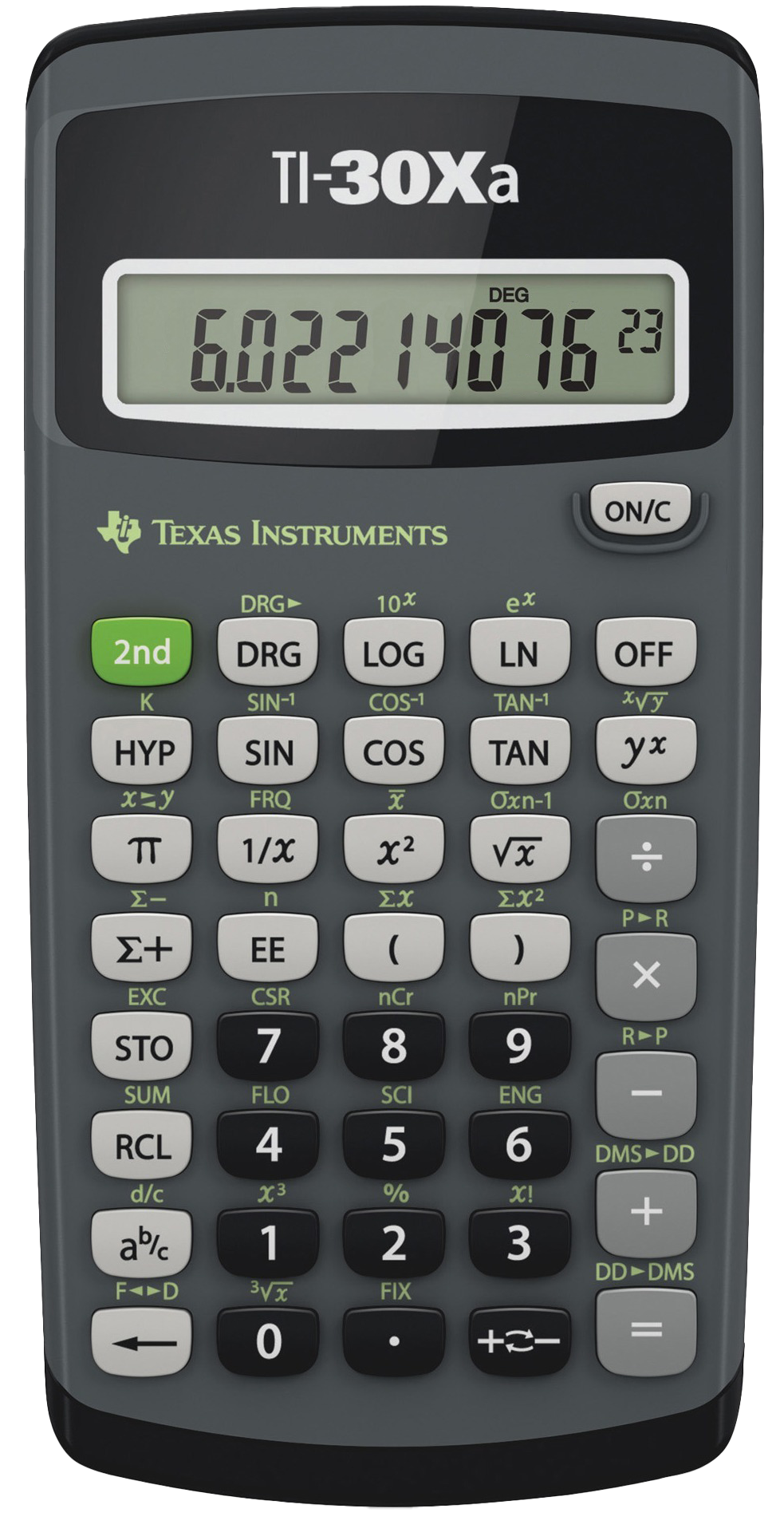Using a Calculator
and when I say calculator, I mean Scientific Calculator


This is a science class, and we science types really depend on math a lot. We crunch numbers. Some crunching is rather trivial - we add a bunch of numbers and then multiply and divide. The trivial stuff can typically be done easily by any calculator. Add, subtract, multiply, divide - those are our main "goto" mathematical functions for getting things done. You should already know how to punch the buttons on a calculator to get those fundamental functions done. Great. But we science guys also have a few other needs as well. Needs that are beyond the reach of a "plain ol' calculator".
Big-Ass Numbers Yeah, we science guys use big-ass numbers. And I don't just mean a million (106) or a billion (109) or even a trillion (1012). But even bigger - like a septillion (1024) or a nonillion (1030) or crazy-ass bigness like a centillion (10303)! Ok, I lied about that last one... although, it is a real number - but we will never ever use it. And, do you really want to memorize all those xxxx-illions? No. We just need to know what power of 10 we are dealing with and a way to convey that in an intelligent manner. Answer: Scientific Notation! and a Scientific Calculator!
Scientific Notation Any number in the realm of numbers can be expressed as a number between 1 and 10 multiplied by 10 to the appropriate power. The diameter of the earth at the equator is 7918 miles. In scientific notation that is 7.918 × 103 miles. "Reasonable" numbers are easy enough to use as is without scientific notation. "Reasonable" here means that we humans can easily hear them said and depict them quickly and easily without having to add numerous zeros to get them to the right factor of 10. So any normal counting number works well - all the way to 1000 or so. But once you get up to very large numbers like 93 million mile from earth to sun, you need to switch over to scientific notation. Writing out the number for ninety-three million is long, 93,000,000 - and that's an easy one. It is much more efficient to write 9.3 × 107. So learn to do it and learn to properly enter it into a scientific calculator.
Learn HOW to USE your Scientific Calculator Properly
Use the EE or EXP key Scientific calculators have a special key for scientific notation numbers. It is either the EE or the EXP key and it represents the "times ten" to some power (×10x) part of scientific notation. So lets say we want to enter Avogadro's number which is 6.02 × 1023. Here is how you do that. Each entry below is a button push on the calculator:
After that you will see:
on your calculator display.
Put it in mode! If you just put your calulator into SCI mode, ALL of your numbers will automatically display in scientific notation. This is generallly a good idea when calculating with really big and really small numbers. The default mode is FLO mode - or float mode, for floating decimal point. Float mode displays as much of the number as the display will allow before switching over to SCI mode. Float mode is fine for many types of calculations, but it can allow for errors when you are copying over numbers with lots of leading zeros or trailing zeros. When the numbers get unruly, go with SCI mode.
There is much more than + – × ÷
We also have to use logarithms and natural logarithms (LOG and LN). You need a scientific calculator for that. We sometimes have to take "unfriendly" powers of numbers (not just x2, but xn). The same goes for roots of numbers. We sometimes need to use π to calculate areas of circles or volumes of a sphere. And heaven forbid... we might even have to take a trig function like SIN, COS, or TAN. Yikes! You NEED that scientific calculator.
Take Home Lesson for this Page...
Get a scientific calculator and learn how to properly use it.
external links